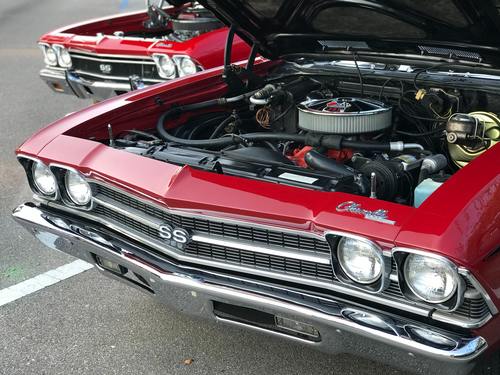Georgetown Insurance Agency
For Classic Car Insurance
in Massachusetts & New Hampshire 978-352-8000
in Massachusetts & New Hampshire 978-352-8000
Time to put your car to bed, New England
by Ashley Melnik on Oct 2, 2020

Well, another driving season has come and gone, and although 2020 was not ideal, the weather this past summer was great for cruisin’. And, as the leaves start to turn their gorgeous autumn colors, it’s time once again to start prepping our favorite summer rides for their winter slumber. Here are some tips from Hagerty approved, Griot’s Garage, to get your car ready for the long winter ahead.
- Cover the car with a breathable car cover. Many garages might not have a vapor barrier beneath the floor, so moisture can come up through the floor, speeding corrosion and rust.
- If you’re storing your car for longer than a month, put a battery manager on it. The device senses when a battery needs to be charged and turns itself on and off accordingly.
- Top off the gas tank and add a fuel preservative. The full tank will keep out moisture, and the preservative will keep the gas from breaking down. After adding the preservative, go for a short drive to run the preservative through the injectors and carburetors.
- Try putting down a few moisture pads on the upholstery to absorb moisture inside the car. No one wants to smell mildew in the spring.
- Rodents can nest in an engine compartment. Try a rodent repellent under the hood, but remember to remove it before starting up.
- If you’re in a freezing climate, make sure your antifreeze is fresh and topped off to avoid corrosion. Top off your windshield solvent too.
- Change the oil before storing – you don’t want to see nasty sludge in the spring.
- Over-inflate your tires to avoid flat spotting. If storing longer than a couple of months, you can jack up the car to take pressure off the tires.
- Put it away with a good wash and wax job to protect the paint. Protect the chrome with wax or paint sealant.
- When a car sits, the oil settles into the pan, leaving the engine without lubrication. In the spring, disconnect the coil wire and crank the engine over several times or until the oil pressure increase – if your vehicle has a gauge. Then reconnect the coil wire and you should be good to go!
Return to
« All articles
« All articles
Previous article
« Get your motor running, Spring is...
« Get your motor running, Spring is...